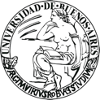Publications
-
Continuous and long-term monoxenic culture of the arbuscular mycorrhizal fungus Gigaspora decipiens in root organ culture
Establishment of arbuscular mycorrhizal (AM) germplasm collections is complex because of the obligate biotrophic nature of AM fungi. Only a few AM species are routinely maintained in monoxenic culture with Ri T-DNA transformed roots as host. Incorporation of new AM species into this culture system is important for molecular, physiological, and taxonomical studies. Here we report for the first time the successful monoxenic culture of Gigaspora decipiens (JA2 strain) with transformed carrot (Daucus carota) roots. In vitro cultures were established from field-collected spores; sub-culture of newly in vitro formed spores was established over five successive generations for a period of 6 y. Although initial culture of field collected spores was difficult successive sub-cultures appeared to be adapted to the in vitro growing conditions. The JA2 strain of G. decipiens completed its life cycle while maintaining its morphological characteristics, stability, and propagule viability under the monoxenic conditions over several generations. This stable and homogeneous monoxenic material obtained for G. decipiens is part of the Banco de Glomeromycota In Vitro (BGIV, http://www.bgiv.com.ar), and could facilitate morphological, physiological, and molecular analysis of this AM species.
-
Pre-symbiotic and symbiotic interactions between Glomus intraradices and two Paenibacillus species isolated from AM propagules. In vitro and in vivo assays with soybean (AG043RG) as plant host
Two indole-producing Paenibacillus species, known to be associated with propagules of arbuscular mycorrhizal (AM) fungi, were examined for their mycorrhization helper bacteria activity at pre-symbiotic and symbiotic stages of the AM association. The effects were tested under in vitro and in vivo conditions using an axenically propagated strain of the AM fungus Glomus intraradices and Glycine max (soybean) as the plant host. The rates of spore germination and re-growth of intraradical mycelium were not affected by inoculation with Paenibacillus strains in spite of the variation of indole production measured in the bacterial supernatants. However, a significant promotion in pre-symbiotic mycelium development occurred after inoculation of both bacteria under in vitro conditions. The Paenibacillus rhizosphaerae strain TGX5E significantly increased the extraradical mycelium network, the rates of sporulation, and root colonization in the in vitro symbiotic association. These results were also observed in the rhizosphere of soybean plants grown under greenhouse conditions, when P. rhizosphaerae was co-inoculated with G. intraradices. However, soybean dry biomass production was not associated with the increased development and infectivity values of G. intraradices. Paenibacillus favisporus strain TG1R2 caused suppression of the parameters evaluated for G. intraradices during in vitro symbiotic stages, but not under in vivo conditions. The extraradical mycelium network produced and the colonization of soybean roots by G. intraradices were promoted compared to the control treatments. In addition, dual inoculation had a promoting effect on soybean biomass production. In summary, species of Paenibacillus associated with AM fungus structures in the soil, may have a promoting effect on short term pre-symbiotic mycelium development, and little impact on AM propagule germination. These findings could explain the associations found between some bacterial strains and AM fungus propagules.
-
PhD Thesis related to BGIV: ISOLATION AND IN VITRO CHARACTERIZATION OF ARBUSCULAR MYCORRHIZAL FUNGI FROM ARGENTINA
In this thesis, 97 Arbuscular Mycorrhizal Fungi from different geographical sites in Argentina were isolated using colonized root fragments and cultivated in association to transformed carrot roots under in vitro conditions. 33 strains were identified by classical taxonomy and molecular methods through partial amplification of 18S ribosomal DNA (rDNA). In addition, intra- and interespecific phenotypic diversity of isolates was analyzed by morphological characterization of the cultures and dynamics of growth. It was evaluated whether genetic and phenotypic differences observed between the isolates caused variation in plant growth under in vitro and in vivo conditions. By morphological taxonomy, the strains were identified as Glomus intraradices, G. clarum, G. fasciculatum, G. claroideum and various unidentified Glomus spp.. The level of resolution of the sequences of 18S rDNA fragments amplified supports the definition of the different strains of Glomus. This study reveals a large phenotypic variability within and between species. Phenotypic and genetic differences among strains could cause variation in the growth of the host plant.



